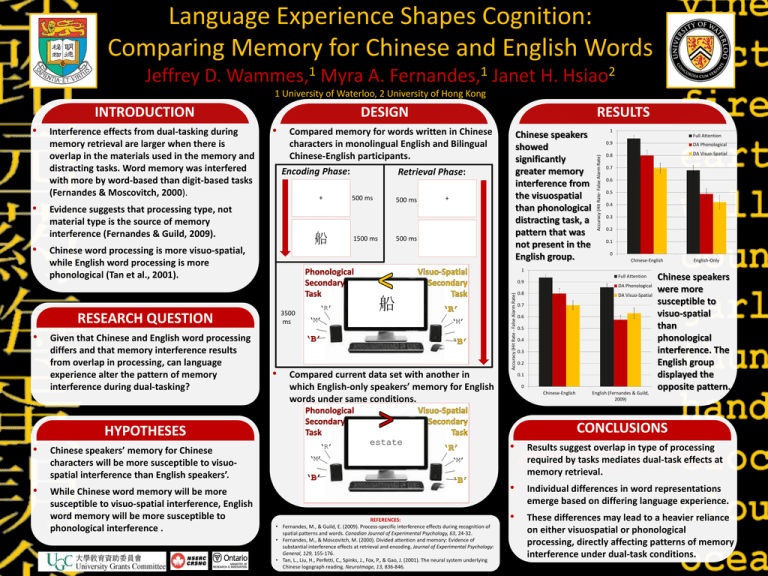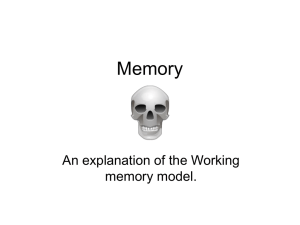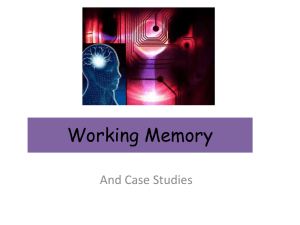Comparing memory for Chinese and English words ()
advertisement

Language Experience Shapes Cognition: Comparing Memory for Chinese and English Words Jeffrey D. 1 Wammes, Myra A. 1 Fernandes, Janet H. 2 Hsiao 1 University of Waterloo, 2 University of Hong Kong • • Interference effects from dual-tasking during memory retrieval are larger when there is overlap in the materials used in the memory and distracting tasks. Word memory was interfered with more by word-based than digit-based tasks (Fernandes & Moscovitch, 2000). • Compared memory for words written in Chinese characters in monolingual English and Bilingual Chinese-English participants. Encoding Phase: + Evidence suggests that processing type, not material type is the source of memory interference (Fernandes & Guild, 2009). Chinese speakers showed significantly greater memory interference from the visuospatial than phonological distracting task, a pattern that was not present in the English group. Retrieval Phase: 500 ms 1500 ms 500 ms + 500 ms Chinese word processing is more visuo-spatial, while English word processing is more phonological (Tan et al., 2001). Given that Chinese and English word processing differs and that memory interference results from overlap in processing, can language experience alter the pattern of memory interference during dual-tasking? Chinese speakers’ memory for Chinese characters will be more susceptible to visuospatial interference than English speakers’. • While Chinese word memory will be more susceptible to visuo-spatial interference, English word memory will be more susceptible to phonological interference . Full Attention 0.9 DA Phonological 0.8 DA Visuo-Spatial 0.7 0.6 0.5 0.4 0.3 0.2 0.1 0 Chinese-English Full Attention 0.9 3500 ms • ‘R’ ‘M’ ‘M’ Compared current data set with another in which English-only speakers’ memory for English words under same conditions. DA Phonological 0.8 DA Visuo-Spatial 0.7 0.6 0.5 0.4 0.3 0.2 0.1 0 Chinese-English English (Fernandes & Guild, 2009) English-Only Chinese speakers were more susceptible to visuo-spatial than phonological interference. The English group displayed the opposite pattern. CONCLUSIONS HYPOTHESES • 1 1 RESEARCH QUESTION • RESULTS Accuracy (Hit Rate - False Alarm Rate) • DESIGN Accuracy (Hit Rate- False Alarm Rate) INTRODUCTION ‘R’ ‘M’ estate • Results suggest overlap in type of processing required by tasks mediates dual-task effects at memory retrieval. • Individual differences in word representations emerge based on differing language experience. • These differences may lead to a heavier reliance on either visuospatial or phonological processing, directly affecting patterns of memory interference under dual-task conditions. ‘M’ REFERENCES: • Fernandes, M., & Guild, E. (2009). Process-specific interference effects during recognition of spatial patterns and words. Canadian Journal of Experimental Psychology, 63, 24-32. • Fernandes, M., & Moscovitch, M. (2000). Divided attention and memory: Evidence of substantial interference effects at retrieval and encoding. Journal of Experimental Psychology: General, 129, 155-176. • Tan, L., Liu, H., Perfetti, C., Spinks, J., Fox, P., & Gao, J. (2001). The neural system underlying Chinese logograph reading. NeuroImage, 13, 836-846.











